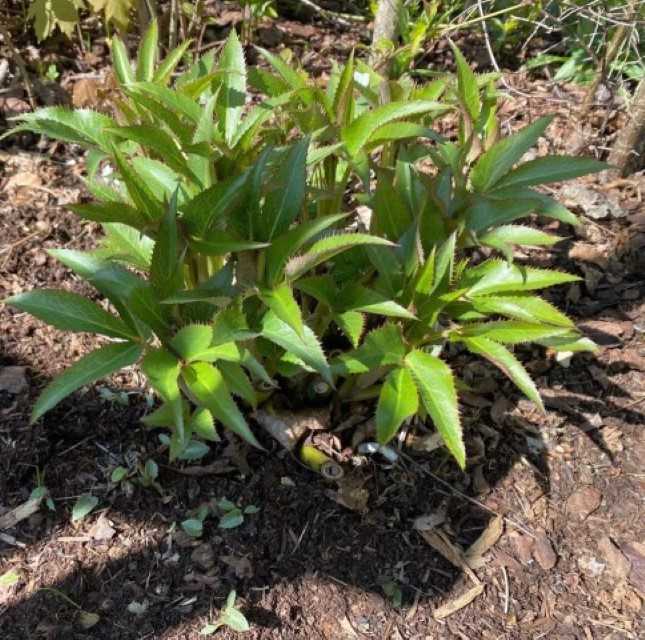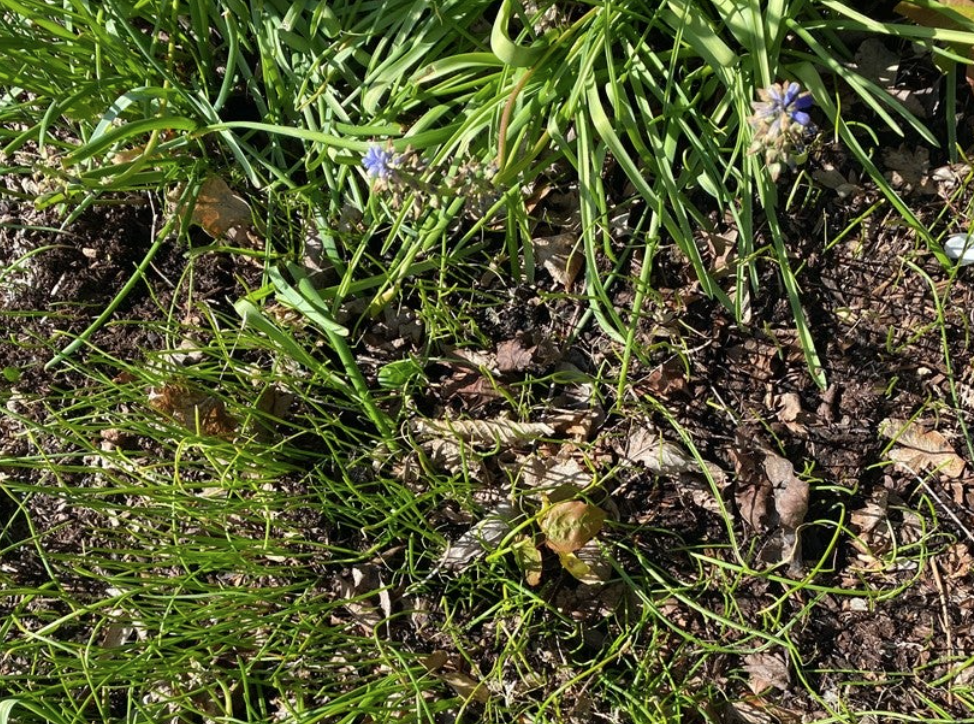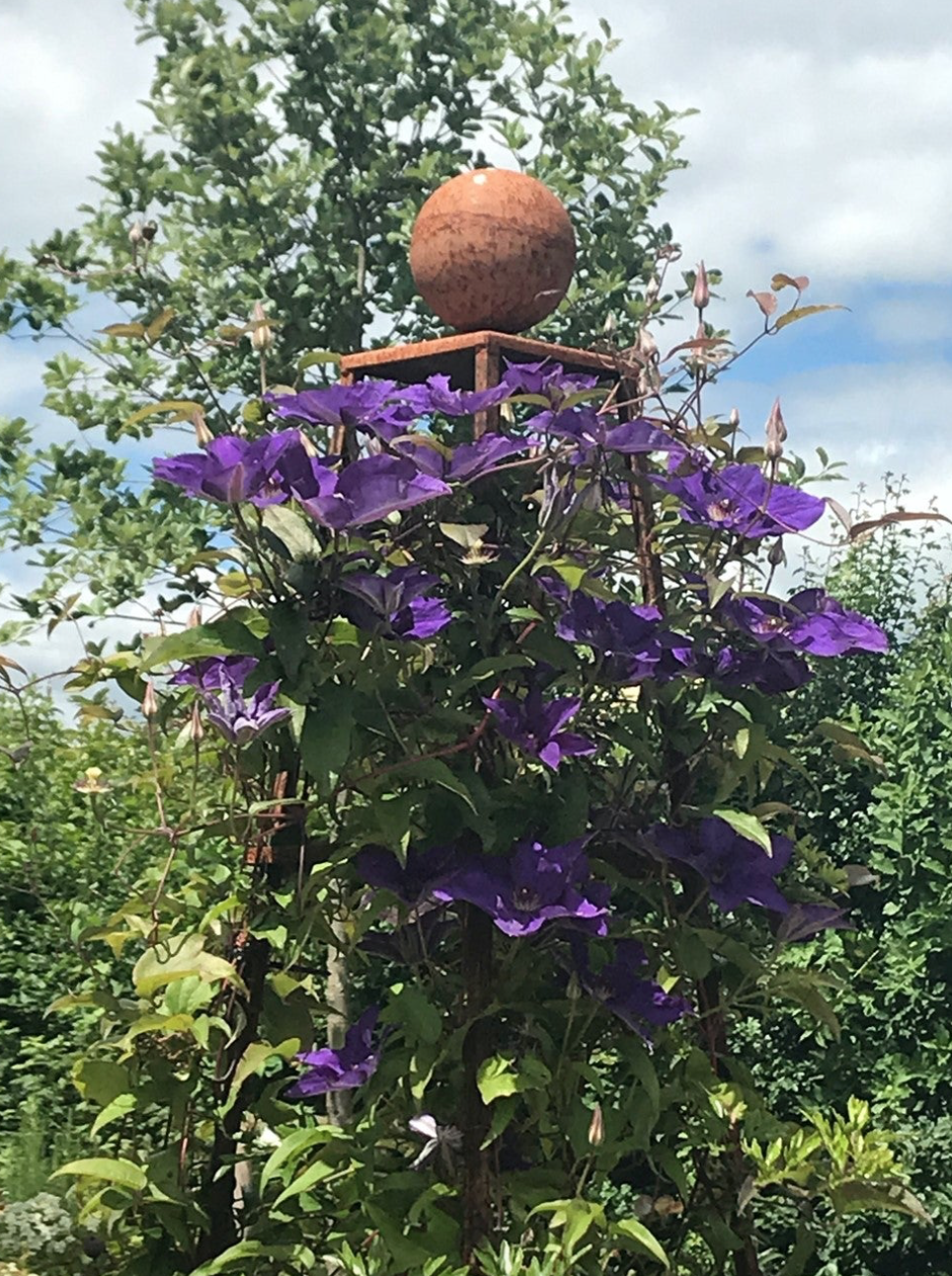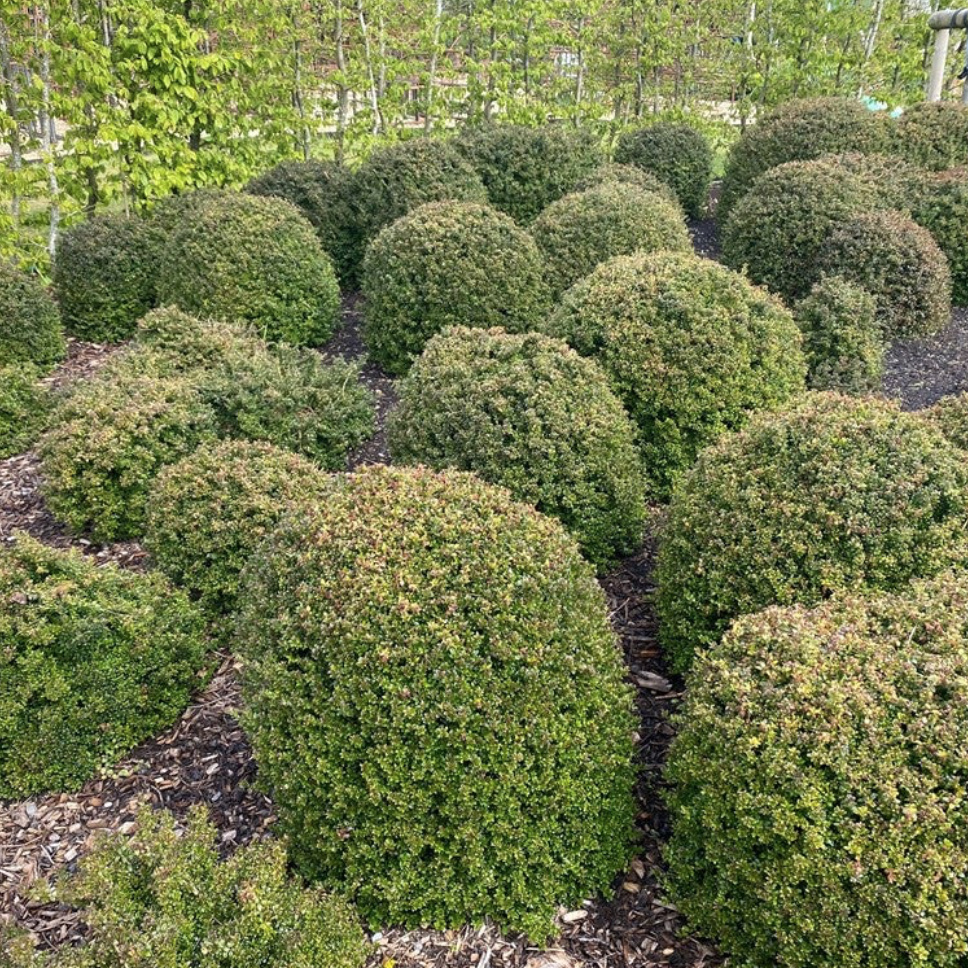
Gardening notes: the goods, the bads and the downright ugly!
Lesley Ann Sandbach
Self-sown seedling of Helleborus argutifolius and Helleborus orientalis have germinated beneath their parent plants.

The grass-like seedlings of Muscari armeniacum are spreading over large areas; our cat, Charlie, keeps a watchful eye on the new peony shoots growing through their support.

A steel planter produces good crops of the sweetest vegetables.
The time has come to update our photo library. Over the years we have tweaked designs: changing the size of the balls on some supports or the gauge of the steel on others so the images, too, need to reflect this.
The result has been a weekend of glorious weather spent on my hands and knees preparing for a photoshoot, weeding the two big borders and taking account of the pluses and minuses of the winter which was long and cold here in Gloucestershire and which seems still to be inflicting damage.
One of yesterday’s tasks was cutting the flowering heads off all of my hellebores. There was still some beauty left in them but the seed pods were swelling and I already have a good crop of self-sown seedlings beneath the plants that I allowed to set seed last Spring. Hellebores are notoriously promiscuous so I shall be very lucky to get more than one or two decent colours from my seedlings – most will be a washed-out pink despite their gloriously burgundy or speckled white parents. Another reason for taking off the ripening heads is that the plants have been affected by hellebore wilt (a fungal infection). I have cut off all the wilted stems and I want the plants to bulk up as much as possible this Summer – taking off the seed pods will ensure that strength goes to growth and not ripening seeds. Next Autumn I shall avoid mulching the crowns (the same applies to peonies which will stop flowering if buried deeply) and hope that helps.

Large gaps in the planting up the Abinger Obelisk will be filled with a soft-white climbing rose, ‘Sombreuil’.


Lonicera nitida being trained as a cloud-pruned bed – the bare-rooted plants, straggly little things, were planted in the spring of 2020 and have grown vigorously.
Another enthusiastic self-seeder, which has already become a nuisance, is Muscari armeniacum, the common grape hyacinth. While I welcome its spires of blue flowers in early Spring, even before the narcissus are showing, it does take over large areas with its grass-like seedlings. This year I shall resort to hoeing areas in the border where the seedlings are threatening to take over.
While I was looking around, I noticed that the Abinger obelisk that gave me such pleasure last year, with its planting of Trachelospermum jasminoides, Clematis ‘Early Splendour’ and Clematis ‘The President’, needed attention. The late, fierce frosts have not only spoiled the flowers of the ‘Early Splendour’ but seem to have killed the plant completely; the Trachelospermum’s leaves were so badly burned that I have cut the whole plant to the ground. The obelisk now has a large gap at the bottom which the herbaceous perennials have not yet grown enough to fill. Into the gap, I shall plant a Peter Beale’s climbing rose, ‘Sombreuil’, which I shall train round the obelisk to fill the gap.
My tiny vegetable garden which sits in one of our steel planters in a sheltered part of the garden is looking very healthy. Broad bean ‘Aquadulce’ was planted in October and over-wintered well - it is now in flower and attracting pollinators; behind it sits a row of purple-sprouting broccoli which we shall harvest in mid-June; in front I have spinach, and one, lone remaining leek. Once the danger of frost has passed, the rest of the bed will be filled with runner beans, planted up a square obelisk; succession-sown lettuce ‘Freckles’ and dwarf French beans. I keep sacking to hand to throw over the cage whenever frost threatens.
Other things to do in the garden:
-
Don’t forget to stake perennial plants; get stakes in now round lupins and delphiniums to support those heavy flower heads.
-
Peony supports can still be carefully popped over the emerging red shoots.
-
Spring-flowering shrubs such as forsythia, ribes and spirea can be pruned once they have finished flowering.
-
Now is the month for weeding and hoeing; a great gardening friend convinced me that a really thorough weeding session in May makes keeping the garden clear of weeds much easier for the rest of the season.
-
You can still sow climbing beans, such as ‘Blue Lake Stringless’ or ‘Cobra’ – their coloured blossoms offer early visual interest before the beans come.
-
Sow late-maturing vegetables such as pumpkins and courgettes by the end of the month.
-
Now is the time to sow winter brassicas – eat them after the first frost when sugar levels have risen.
-
Crops that are putting on growth will need a good feed this month – I use liquid seaweed or tomato food (despite its name, it is a good all-round vegetable food).
-
Do keep an eye on cold frames and greenhouses; open vents on sunny days and keep young plants watered – they can dry out very fast.
-
On the other hand, don’t be caught out by the lure of getting tender plants, such as beans and bedding plants, outside too soon. Cold weather can suddenly return! Harden plants off by putting them outside during the day and keep fleece to hand to throw over them at night.
May is the traditional month for clipping topiary but is your buxus sempervirens, the common box used for balls and hedges, blighted? In recent years box blight and buxus caterpillar have ravaged the country’s hedges and topiary. If you need to replace your box, here are three alternatives to think about:
-
Teucrium lucidrys (an evergreen perennial with a spicey aroma and small, pink flowers): it forms a neat, low hedge and seems to associate particularly well with fruit and vegetables; teucrium fruticans can be clipped into balls for the herbaceous garden.
-
Euonymus japonicus ‘Green Rocket’ has been trialed for several years at Highgrove as an alternative to box; less vigorous but far less prone to disease.
-
Lonicera nitida (a member of the honeysuckle family): it is vigorous and will need pruning 2 or 3 times a year but makes an excellent base for a cloud pruned hedge
-
Browse our complete range of plant supports at www.muntons.net
Follow us on Pinterest for more advice and inspiration for your English country garden: www.pinterest.co.uk/plantsupports
Follow us on Instagram: www.instagram.com/muntons_plant_supports
Follow us on Facebook: https://www.facebook.com/muntonstraditionalplantsupports
